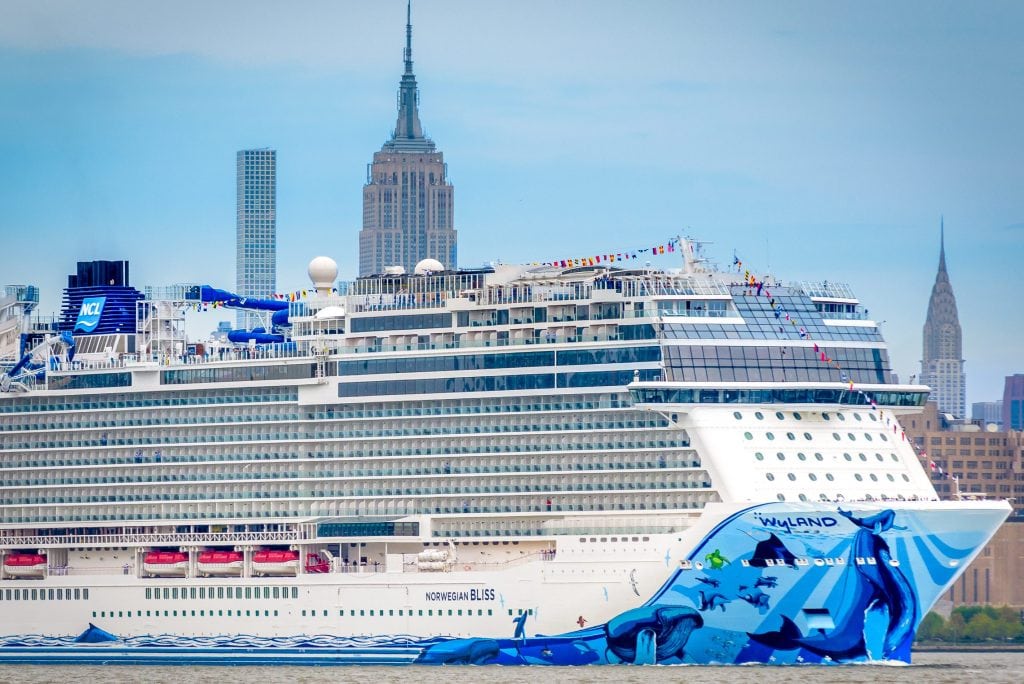Skift Take
Cruise lines keep loading their ships with things for passengers to buy — Starbucks latte and a game of laser tag, anyone? With consumers feeling confident, no one seems to mind spending money on extras. But if the economy takes a turn for the worse, will that change?
The world’s third-largest cruise company sailed to a record second quarter thanks to strong demand, higher onboard spending, and the performance of its newest megaship.
Norwegian Cruise Line Holdings — which includes Norwegian Cruise Line, Oceania Cruises, and the luxury Regent Seven Seas Cruises — reported Thursday that revenue increased more than 13 percent to $1.5 billion, while net income jumped to almost $227 million compared to about $199 million last year.
The company raised its full-year outlook to adjusted earnings per share of $4.70 to $4.80, significantly higher than the $4.45 to $4.65 it had set at the beginning of the year. Executives gave investors a heads up last month that they expected to raise the forecast when the next financial results came out.
“The continued strength in worldwide cruise demand and the broad acceptance of our product offerings across all three brands is the main driver of our more bullish outlook,” Norwegian Cruise Line Holdings CEO Frank Del Rio said in a call with analysts.
He highlighted Norwegian Bliss, which launched in late May, as one driver of the strong quarter and of the revised outlook.
“Her performance to date has been nothing short of extraordinary, particularly in terms of onboard revenue where her yields are surpassing our highest expectations and breaking records sailing after sailing,” Del Rio said.
That desire to boost onboard spending, on everything from alcohol and meals to Wi-Fi, laser tag, and shore excursions, played into the company’s decision to relocate its China-based ship to Alaska and Los Angeles next year.
Del Rio said he expects the redeployment of Norwegian Joy to benefit earnings in large part because of the “higher onboard yields compared to where that vessel is operating today.”
“We’re always looking for higher and higher profitability,” he said. “And the delta between the performance of what that vessel was generating in China and what we expect it to generate in Alaska and in Mexico [and] Panama Canal cruises in the wintertime was significant. And so we do believe that China still holds significant potential, and we will participate in that potential with a vessel that doesn’t have the same opportunity cost gap that Joy has.”
Taking a broader view, Del Rio said a healthy U.S. economy — he cited indicators including low unemployment, tax cuts, low interest rates, and a roaring stock market — was improving consumer confidence and fueling demand for cruises.
“As an industry, cruising has a unique advantage in that it can measure consumer confidence first-hand in both the short and long term,” he said. “We measure short-term confidence literally every day through trends in onboard spend while long-term confidence is validated by growth in the number of bookings, ticket pricing, and the length of the booking curve.”
As an example, he said that advance ticket sales through June 30 were up 26 percent over the prior year, while capacity had grown 9 percent.
“At Norwegian Cruise Line Holdings, all of these short- and longer-term indicators have been at historic highs for some time,” Del Rio said. “Given the impressive macro trends bolstering the economy at large, we see no reason why these rising trends won’t continue, supply growth notwithstanding.”
The Daily Newsletter
Our daily coverage of the global travel industry. Written by editors and analysts from across Skift’s brands.
Have a confidential tip for Skift? Get in touch
Tags: earnings, norwegian cruise line
Photo credit: Norwegian Cruise Line released strong second-quarter earnings Thursday. Norwegian Bliss is shown in New York City in a photo from earlier this year. Norwegian Cruise Line
